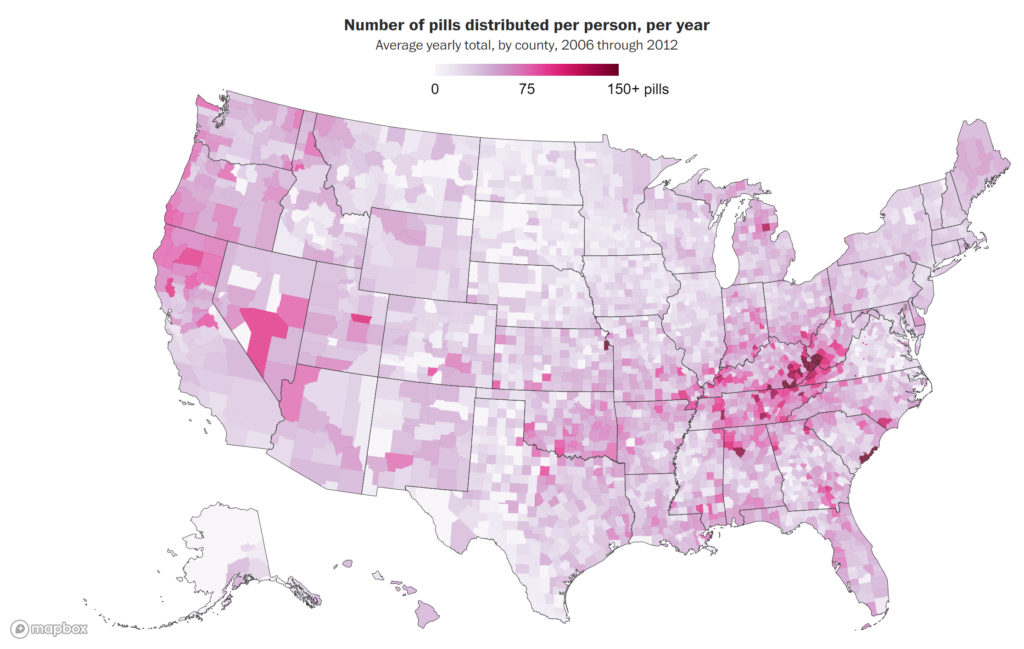76 billion opioid pills: Newly released federal data unmasks the epidemic – “America should brace itself for the harsh reality of the scope of the opioid epidemic”

By Scott Higham, Sari Horwitz, and Steven Rich
16 July 2019
(The Washington Post) – America’s largest drug companies saturated the country with 76 billion oxycodone and hydrocodone pain pills from 2006 through 2012 as the nation’s deadliest drug epidemic spun out of control, according to previously undisclosed company data released as part of the largest civil action in U.S. history.
The information comes from a database maintained by the Drug Enforcement Administration that tracks the path of every single pain pill sold in the United States — from manufacturers and distributors to pharmacies in every town and city. The data provides an unprecedented look at the surge of legal pain pills that fueled the prescription opioid epidemic, which has resulted in nearly 100,000 deaths from 2006 through 2012.
The drug companies, along with the DEA and the Justice Department, have fought furiously against the public release of the database, the Automation of Reports and Consolidated Order System, known as ARCOS.
Just six companies distributed 75 percent of the pills during this period: McKesson Corp., Walgreens, Cardinal Health, AmerisourceBergen, CVS and Walmart, according to an analysis of the database by The Washington Post. Three companies manufactured 88 percent of the opioids: SpecGx, a subsidiary of Mallinckrodt; Actavis Pharma; and Par Pharmaceutical, a subsidiary of Endo Pharmaceuticals. […]
The database reveals what each company knew about the number of pills it was shipping and dispensing and precisely when they were aware of those volumes, year by year, town by town. In case after case, the companies allowed the drugs to reach the streets of communities large and small, despite persistent red flags that those pills were being sold in apparent violation of federal law and diverted to the black market, according to the lawsuits. […]

The drug companies, along with the DEA and the Justice Department, have fought furiously against the public release of the database, the Automation of Reports and Consolidated Order System, known as ARCOS. The companies argued that the release of the “transactional data” could give competitors an unfair advantage in the marketplace. The Justice Department argued that the release of the information could compromise ongoing DEA investigations. […]
“The depth and penetration of the opioid epidemic becomes readily apparent from the data,” said Peter J. Mougey, a lawyer for the plaintiffs from Pensacola, Fla. “This disclosure will serve as a wake up call to every community in the country. America should brace itself for the harsh reality of the scope of the opioid epidemic. Transparency will lead to accountability.” [more]
76 billion opioid pills: Newly released federal data unmasks the epidemic


